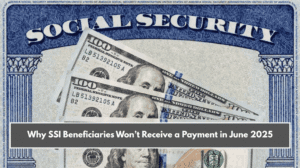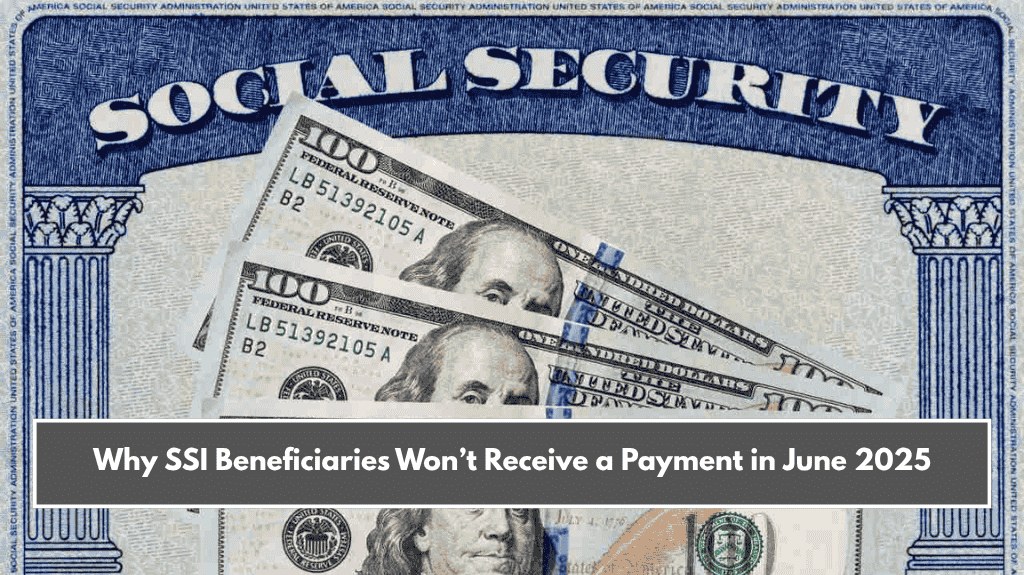Social Security plays a vital role in the financial stability of millions of Americans, especially retirees. However, 2025 Social Security restrictions are set to bring changes that will affect eligibility and benefit amounts.
These reforms aim to make the program fairer, adapt to economic changes, and ensure its sustainability for future generations. Whether you’re already retired, planning to retire, or an employer, it’s crucial to understand these changes to maximize your benefits.
This article breaks down the 2025 Social Security updates, including Cost of Living Adjustments (COLA), changes to Windfall Elimination Provision (WEP) and Government Pension Offset (GPO), higher taxable earnings caps, and adjustments to Full Retirement Age (FRA). Here’s everything you need to know to stay informed and plan ahead.
2025 Social Security Restrictions
| Feature | Details |
|---|---|
| Cost-of-Living Adjustment (COLA) | 2.5% increase for 2025, raising the average benefit from $1,927 to $1,976 per month. |
| Repeal of WEP and GPO | Restores full benefits for 2.8 million public-sector retirees. |
| Taxable Earnings Cap | Increased from $168,600 to $176,100 annually. |
| Earnings Limit for Early Retirement | Raised to $23,400 for those below full retirement age. |
| Full Retirement Age (FRA) | Gradually increasing to 66 years and 10 months for those born in 1959. |
These changes reflect the ongoing efforts to improve Social Security by adapting it to current economic and demographic realities. Here’s a closer look at each of these important updates.
1. Cost-of-Living Adjustment (COLA)
One of the most significant updates for 2025 is the 2.5% Cost-of-Living Adjustment (COLA). This increase helps Social Security benefits keep up with rising inflation and ensures that retirees’ purchasing power doesn’t decrease. For example, a retiree who currently receives $1,927 per month will see their payment rise to approximately $1,976.
This increase may seem small, but when compounded over a year, it provides meaningful relief for retirees, especially given the rising costs of essentials like food, healthcare, and housing. Without COLA adjustments, inflation could erode the value of benefits, leaving retirees struggling to meet basic needs.
2. Repeal of WEP and GPO
A major win for public-sector retirees, the Social Security Fairness Act in 2025 repeals two controversial provisions: the Windfall Elimination Provision (WEP) and the Government Pension Offset (GPO).
- WEP previously reduced benefits for individuals who worked in jobs not covered by Social Security, such as certain public-sector roles (e.g., teachers, firefighters, and police officers).
- GPO reduced spousal or survivor benefits for individuals receiving government pensions.
The repeal of these provisions restores full benefits to approximately 2.8 million retirees, offering much-needed financial stability to public-sector employees and their families.
3. Higher Taxable Earnings Cap
The amount of income subject to Social Security taxes will increase from $168,600 to $176,100 in 2025. This adjustment accounts for inflation and helps secure more funding for the Social Security program. Higher-income earners will contribute more to the system, which strengthens its long-term viability.
While this means some workers will pay slightly more in Social Security taxes, it ensures the program remains financially stable and can continue to support future beneficiaries.

4. Earnings Limits for Early Retiree
If you’re planning to retire early, you’ll need to be aware of the new earnings limit for individuals under Full Retirement Age (FRA). For 2025, the limit will increase to $23,400. If you earn more than this amount, your Social Security benefits will be temporarily reduced—$1 will be withheld for every $2 earned over the limit.
However, once you reach Full Retirement Age, these deductions no longer apply, and your benefits will be recalculated to include any amounts previously withheld. This adjustment ensures that working retirees are not penalized for earning income, but it’s important to monitor your earnings if you’re close to the limit.
5. Full Retirement Age (FRA) Adjustments
The Full Retirement Age (FRA) is gradually increasing. For those born in 1959, the FRA will be 66 years and 10 months. Delaying retirement until FRA or beyond allows beneficiaries to maximize their monthly payments because delayed retirement credits boost payouts by up to 8% per year.
Understanding your FRA is critical for planning when to start collecting Social Security benefits. Delaying benefits beyond FRA can provide a larger monthly payout, which can make a significant difference over time.
How These Changes Impact You
Retirees and Beneficiaries
If you’re already receiving Social Security benefits, the COLA increase provides a slight boost to your monthly income. For public-sector retirees, the repeal of WEP and GPO could result in significantly higher payments, offering newfound financial stability.
Workers Nearing Retirement
For workers nearing retirement, higher taxable earnings caps mean contributing more to Social Security if you’re a high-income earner. While this will reduce your short-term budget, it strengthens the Social Security system for the long term. Understanding how FRA adjustments affect your benefits is also crucial for strategic retirement planning.
Employers
Employers will need to adjust payroll systems to account for the new taxable earnings cap. Accurate tracking of employee earnings ensures compliance and avoids penalties. It’s also important for businesses to educate employees about these changes so they can adjust their retirement planning accordingly.
Practical Tips for Navigating Social Security in 2025
- Stay Informed
Regularly check for updates from the Social Security Administration (SSA). Visit their website (ssa.gov) to get the latest news, policy changes, and access to personalized tools like benefit calculators. - Review Your Benefits Statement
Log into your SSA account to review your benefits estimate. This tool provides an up-to-date overview of how much you can expect to receive, factoring in changes like the COLA increase. - Consult a Financial Advisor
Social Security can be complex, especially with the changing rules. A financial advisor can provide tailored advice on when to claim benefits, how to maximize spousal or survivor benefits, and strategies to minimize taxes. - Plan for Earnings Limits
If you plan to work part-time in retirement, make sure your earnings stay below the new $23,400 limit to avoid benefit reductions. Keep detailed records and adjust your work schedule if needed. - Leverage Retirement Accounts
Supplement your Social Security income with savings from 401(k)s, IRAs, or other investment accounts. These funds can provide a financial cushion, especially if benefit adjustments fall short of covering inflation-driven costs. - Educate Yourself About FRA
Understanding how your Full Retirement Age affects your benefits is critical. For example, claiming benefits early will reduce your monthly payments, but delaying benefits past FRA can increase them by up to 8% per year.
The 2025 Social Security restrictions bring important updates that could affect your benefits, whether you’re already retired, nearing retirement, or planning your future. From the COLA increase to the repeal of WEP and GPO, these changes are designed to make Social Security more equitable and ensure its sustainability. Understanding these updates will help you make informed decisions and maximize your benefits for a secure retirement.















